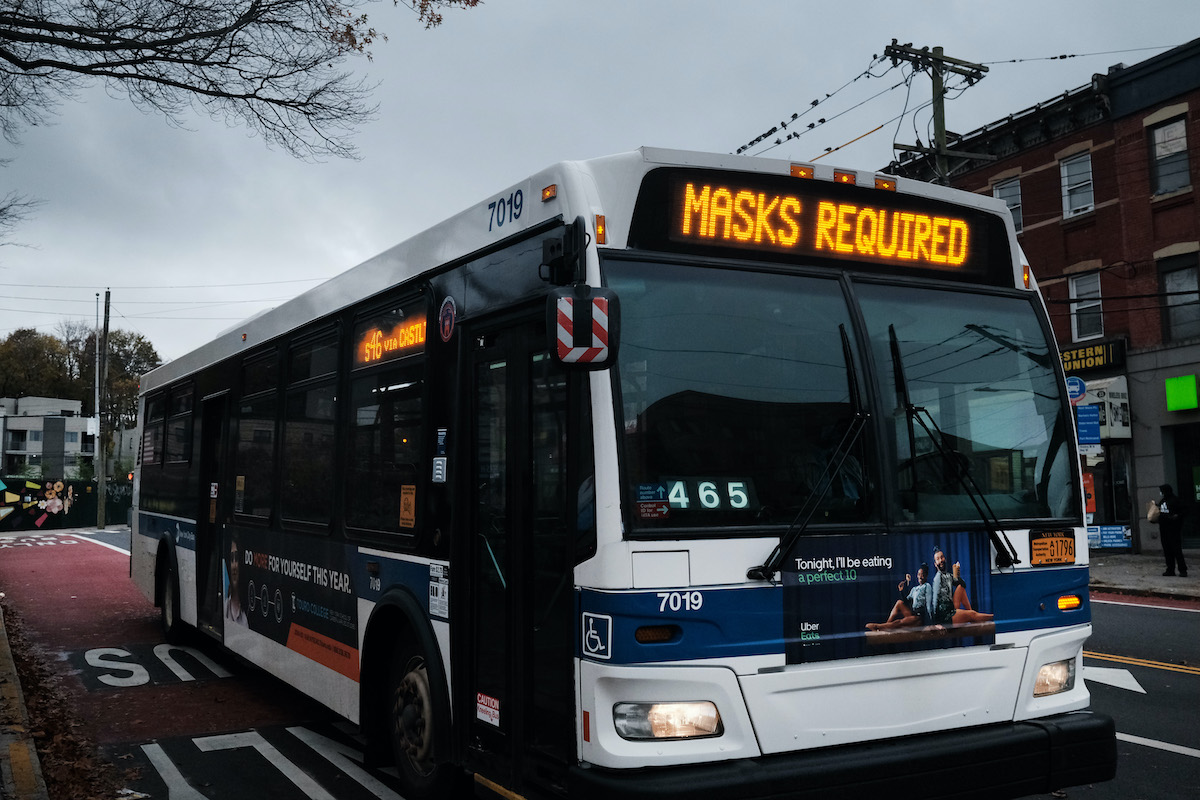The Debate Over Airplane Mask Mandates Stinks of Elitism
Buses also exist, you know.

This week, the federal mask mandate on public transit ended, thanks to literally just one 35-year-old judge in Florida who was appointed by Trump and has been deemed unqualified for her position by the American Bar Association.
That led to a lot of distressing scenes, like videos of passengers being told mid-flight that they could remove their masks, which sure seems like a breach of contract for everyone who booked and boarded that flight with the guarantee that they’d be able to fly with that protection in place.
Overall, the vast majority of debate over whether the end to this mandate is good, bad, or somewhere in between has focused almost entirely on airlines. In one representative but especially inane take that dominated my news feed for much of this week, statistician Nate Silver wrote, “The average American eats at a restaurant about 250 times per year, whereas they travel by airplane about 2.5 times per year. Dining out and general nightly social activity is a much, much, much bigger contributor to COVID spread than air travel.”
The average American eats at a restaurant about 250 times per year, whereas they travel by airplane about 2.5 times per year. Dining out and general nightly social activity is a much, much, much bigger contributor to COVID spread than air travel.
— Nate Silver (@NateSilver538) April 19, 2022
Setting aside the fact that dining out and “nightly social activity” are things that pretty much everyone has the ability to avoid based on their own personal risk tolerance while air travel operates in an entirely different sphere of potentially necessary activity—and also ignoring that air travel is responsible for the spread of variants in a way that cannot on any scale compare to spending an hour eating tacos—this argument misses a crucial fact: Air travel is far from the only method of travel now without a mask mandate.
The mandate this unqualified judge struck down also applied to buses, trains—basically all other forms of public transit, all of which is being largely ignored in this exhausting debate.
According to a study from the American Public Transportation Association from 2017 (which they say is the most extensive demographic report of public transit riders ever conducted), the majority of people who take public transit do so to get to their jobs or to school, meaning it’s not optional the way dining out is. Most of those people are people of color, and most have incomes below the national average. Also, most people who travel via public transit do so five times a week or more, meaning that the comparison to dining out 250 times a year (which is a lot, by the way!) needs to be entirely reexamined. On top of that, about half of people traveling on public transit make at least one transfer, so the potential spread is increased exponentially.
Focusing solely on airplanes when discussing this mask mandate while ignoring everyone who rides a bus five days a week for a job that requires them to be there in person despite the ongoing risks doesn’t just falsely minimize the danger at play, it’s also elitist as hell.
(image: Spencer Platt/Getty Images)
Have a tip we should know? tips@themarysue.com